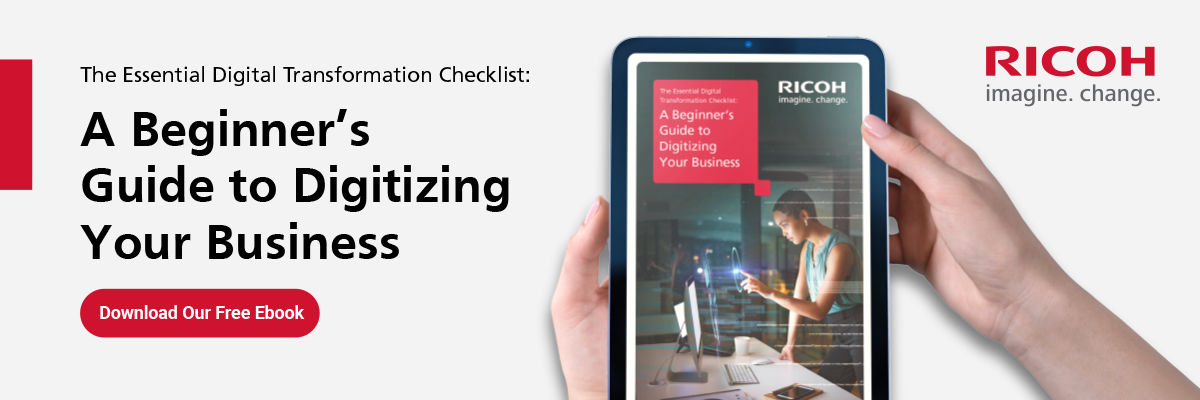Minimize the risk and clutter of storing physical images by using photo digitization to convert them into digital files.
Whether in a professional or personal setting, storing images is an integral part of recording the world for future reference. Maintaining physical records requires an investment of storage space and becomes an increasingly greater organizational burden as those records grow in number. This can be especially onerous for chemically sensitive and mold-prone documents, such as photographs, but even photos stored in ideal conditions take up a significant amount of space and can be difficult to access or retouch.
Photo digitization solves many of the practical issues inherent to storing physical photos by creating easily accessible electronic versions. Read on to learn how photo digitization offers a superior alternative to storing physical copies of photos, and how to find the best tools to digitize them yourself.
Read The Complete Guide to Document Digitization discover the benefits of digitization, get process recommendations, and much more.
What is photo digitization?
Photo digitization is the process of converting physical photos into digital files. Photographs can be digitized through the use of dedicated scanning hardware, and the process has multiple benefits for both professionals and consumers. The digitization process is part of a broader trend of storing electronic files in place of tangible assets that take up space and are more susceptible to loss or damage.
How does photo digitization work?
There are many ways to convert photographs to a digital file with some ways being more efficient than others. A digital camera can quickly convert a photo, but it’s difficult to get a perfectly well lit image with clean rectangular cropping – not to mention it is a slow one by one process. Flatbed scanners are excellent for fragile or aged photos. But for large volumes of photos, a purpose-built scanner with an automatic document feeder can pull in stacks of photos quickly while reproducing their essence in digital format with an incredible amount of accuracy.
Either way, the scanner transmits the information it receives to a connected device or cloud service where it’s saved as a standard image or document format. That file can then be copied, edited, or used to print another physical copy. Storage of the original physical item then becomes optional for personal or historical reasons, rather than required.
The benefits of photo digitization
Photo digitization offers several benefits over storing physical versions, including durability, footprint, accessibility, and mutability. These make photo digitization devices such as scanners an essential tool for professionals and consumers looking to optimize their photo storage.
Preservation
Photos capture a fleeting moment, enabling access to a bygone event or memory. Without them, those memories can fade, and so too can old photos. Exposure to dust and light puts physical images at risk of damage. Moisture, fire, or natural disasters can result in the destruction and irrevocable loss of these records. Digitization offers an ideal solution to protect images from destructive elements by creating electronic versions that can be easily copied and accessed in a variety of ways.
Did You Know?:The ScanSnap iX1600 features a 50-page automatic document feeder and can scan up to 40 pages per minute.
Organization and space-saving
Storing physical photographs requires space, whether in filing cabinets or shelves in offices, or albums and shoeboxes at home. As those archives grow, additional room is needed, more effort is required to keep everything organized, and finding specific items becomes increasingly difficult. Once photos have been digitized, those issues are largely alleviated. Digital files can be saved on hard drives or in the cloud, requiring no investment of physical space for storage. Files can be identified, categorized, and organized as the user sees fit, vastly improving ease of access.
Ability to edit and share
Lastly, photo digitization facilitates sharing and modification. Once the photo has been saved as a digital record, it can be posted, emailed, or linked (making it much more likely that photos you take to commemorate important occasions will actually serve their purpose). And while physical photo editing typically requires access to the original negatives and specialized equipment, it’s easy to make new copies of digital photos and edit them to highlight or stylize their subject matter.
Did You Know?:TechGearLab gave the ScanSnap iX1600 a score of 88, making the scanner its top overall recommendation.
Our recommendation: ScanSnap iX1600
We know you have no shortage of options when it comes to choosing a photo digitization device. We pride ourselves on having spent the last 50+ years designing and developing some of the most beloved electronics in the world, including our line of award-winning, easy to use, one touch ScanSnap scanners.
The ScanSnap iX1600 is a best-in-class option for both professionals and consumers looking to transform their physical images into digital files. Featuring a high-speed automatic document feeder, it can hold up to 50 photos at a time, and scan up to 80 images per minute with the push of a button. The integrated Ultrasonic Sensor and Streak Reduction features ensure image scans are as clean and high-quality as possible. ScanSnap scanners also leverage our proprietary scanning software, which includes features like automatic face recognition, photo rotation, color restoration and red-eye reduction. It also records dates printed on photos as Exif metadata to provide a better user experience. Click here to learn more and shop the full line of ScanSnap scanners.









